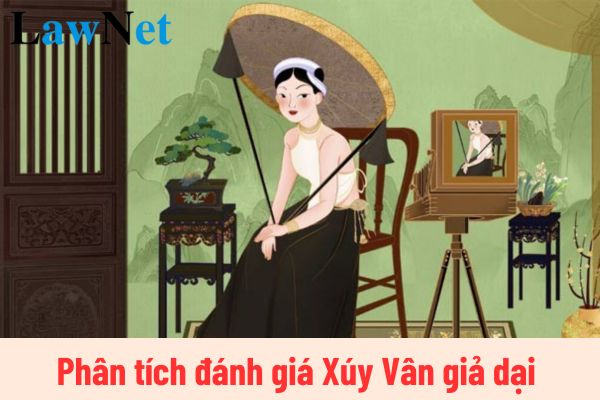What are guidelines on analysis and evaluation of "Xúy Vân giả dại" excerpt from the play "Kim Nham" for students in Vietnam? Are students in Vietnam required to know how to take on the character roles?
What are guidelines on analysis and evaluation of "Xúy Vân giả dại" excerpt from the play "Kim Nham" for students in Vietnam?
Xúy Vân is a complex and contradictory character in the renowned excerpt of the the play "Kim Nham". She embodies both a traditional woman, yearning for family happiness, and a strong individual daring to transcend social barriers to seek her happiness.
The analysis of assessing "Xúy Vân giả dại" from the play "Kim Nham" is included in grade 10 Literature curriculum.
Below is a sample analysis of "Xúy Vân giả dại" from the play "Kim Nham" that students can refer to!
|
Analysis and evaluation of "Xúy Vân giả dại" excerpt from the play "Kim Nham" Image of Xúy Vân before pretending to be mad |
*Note: Information is for reference only./.

What are guidelines on analysis and evaluation of "Xúy Vân giả dại" excerpt from the play "Kim Nham" for students in Vietnam? Are students in Vietnam required to know how to take on the character roles? (Image from the Internet)
Are students in Vietnam required to know how to take on the character roles when learning grade 10 Literature?
Based on Section 5 Appendix of the General Education Program in Literature issued along with Circular 32/2018/TT-BGDDT, regulations on the required competencies in the grade 10 Literature modules are as follows:
Required Competencies
Module 10.1. RESEARCHING AND WRITING A REPORT ON A FOLK LITERATURE ISSUE
- Understand the requirements and methods of researching a folk literature issue.
- Know how to write a research report.
- Apply some understanding from the module to reading comprehension and writing about folk literature.
- Present a topic in folk literature.
Module 10.2. DRAMATIZING LITERARY WORKS
- Understand how to dramatize literary works.
- Know how to proceed with dramatizing a literary work.
- Know how to play roles and perform.
- Recognize the difference between language in literary texts and language in theatrical texts.
Module 10.3. READING, WRITING, AND INTRODUCING A POETRY COLLECTION, A SHORT STORY COLLECTION, OR A NOVEL
- Know how to read a poetry collection, short story collection, a novel.
- Know how to write an introduction for a poetry collection, short story collection, a novel.
- Know how to present and introduce a poetry collection, short story collection, a novel.
Thus, based on these regulations, students must know how to play roles and perform in the grade 10 Literature subject modules.
Which modules are taught in grade 10 Literature in Vietnam?
Based on Section 5 Appendix of the General Education Program in Literature issued along with Circular 32/2018/TT-BGDDT, regulations on the learning modules for the grade 10 Literature subject are as follows:
Required Competencies
Module 10.1. RESEARCHING AND WRITING A REPORT ON A FOLK LITERATURE ISSUE
- Understand the requirements and methods of researching a folk literature issue.
- Know how to write a research report.
- Apply some understanding from the module to reading comprehension and writing about folk literature.
- Present a topic in folk literature.
Module 10.2. DRAMATIZING LITERARY WORKS
- Understand how to dramatize literary works.
- Know how to proceed with dramatizing a literary work.
- Know how to play roles and perform.
- Recognize the difference between language in literary texts and language in theatrical texts.
Module 10.3. READING, WRITING, AND INTRODUCING A POETRY COLLECTION, A SHORT STORY COLLECTION, OR A NOVEL
- Know how to read a poetry collection, short story collection, a novel.
- Know how to write an introduction for a poetry collection, short story collection, a novel.
- Know how to present and introduce a poetry collection, short story collection, a novel.
Thus, students will be taught the following grade 10 Literature modules:
Module 10.1. RESEARCHING AND WRITING A REPORT ON A FOLK LITERATURE ISSUE
Module 10.2. DRAMATIZING LITERARY WORKS
Module 10.3. READING, WRITING, AND INTRODUCING A POETRY COLLECTION, A SHORT STORY COLLECTION, OR A NOVEL

